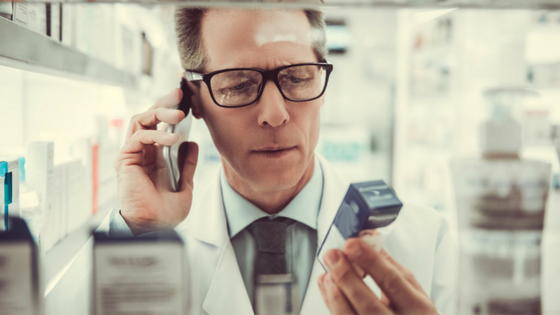From apps to smart pills, new digital tools are tackling this costly problem
Patients who do not take their medication or follow through on doctor-prescribed treatments are a common – and costly – problem. A recent study published in the American Journal of Managed Care examined more than 857,000 patients mostly being treated for chronic conditions such as diabetes, hypertension, and high cholesterol. The patients were undergoing more than 1.2 million distinct therapies.
Patients who adhered to their prescription schedules saved up to $5,341 annually in medical costs, while patients who were non-adherent cost as much as $2,763 more to treat, reported FierceHealthcare.
In a recent post, we discussed some of the reasons why patients are non-adherent and how doctors can address the issue. Here, we will take a look at some exciting new ways technology is being used to increase patient adherence.
Apps = ease of use
“The key to helping patients adhere to treatment plans is to make it easy for them to do so,” stated Managed Healthcare Executive. This is why providers are exploring how the technology patients already use daily – such as smartphones, tablets, and wearable devices – can help improve their health.
Patients already use technology for many aspects of their daily lives. If we can add health care to the list, we have a better chance of increasing adherence.
Patients regularly use these tools to help manage many aspects of their lives, Jonathan Slotkin, MD, FAANS, medical director of Geisinger Health System in Pennsylvania, said in the article. “If we can add healthcare to the list of other items they use technology for, we have a better chance of engaging them and increasing care adherence.”
As we’ve reported, the popularity of mobile health (mHealth), digital health tools, and health apps shows no signs of slowing down. New Jersey physician Linda Girgis, MD, told Managed Healthcare Executive she sees many patients who use these tools. “Apps can emit a sound when it’s time to take a medication, reminding patients when to do so. Oftentimes, patients may not remember if they took a dose or not, but smartphone app alerts eliminate this uncertainty.”
‘Smart pills’ soon to be ubiquitous
“Smart pills” take the idea of medication adherence a step further. Tablets containing tiny ingestible sensors can detect when a person has swallowed the medication. Built-in Bluetooth technology relays the data to a smartphone app, which can be shared with family, caregivers, and the patient’s doctor. Proteus Digital Health won FDA approval in 2015 for this technology, which is still in its early stages.
The ultimate goal is to make “smart pill” technology “ubiquitous within all oral medications on the market.”
“Smart pills” aren’t limited to a specific population or specific medications. “It’s our mission to provide digital medicine for everyone, everywhere,” Yoona Kim, PharmD, Proteus’ head of Clinical Modeling and Analytics told Pharmacy Times. “Our ultimate goal is to make Proteus technology ubiquitous within all oral medications on the market.”
Digital data such as time stamps improves upon previous approaches. “Other methods of monitoring medication adherence such as pill counts, medication diaries, or questionnaires are fraught with bias,” California physician and Stanford School of Medicine associate professor Lars Osterberg, MD, MPH, told Managed Healthcare Executive. “These electronic methods have given us a better understanding of a patient’s medication taking behavior.”
Improving eye-drop adherence
For many reasons, particularly difficulty of use, eye drops have even lower rates of adherence than other medications. Digital health startup Kali Care just announced it is partnering with Aptar Pharma to develop a new way of measuring adherence to eye drops in clinical trials.
A new sensor can detect when and how many eye drops leave the container, and even who is using the medication.
A small sensor installed in an eye drop medication container can detect when the bottle is opened and closed, when drops leave the container, and how many, reported MobiHealthNews. “The software can even pick up on the particular way each person applies eye drops, and after five or six days of use it can detect when someone else is using it.” The sensor integrates with an analytics platform and offers various ways for patients and clinicians to act upon the data.
The companies developing the technology are hopeful that it “will help make clinical trials more efficient and effective,” they said in a statement. “This allows ophthalmologists to improve risk strategies to distinguish patients requiring minimal support from those who require closer monitoring.”
To stay up to date on all the latest health care news and trends, subscribe to our newsletter.

